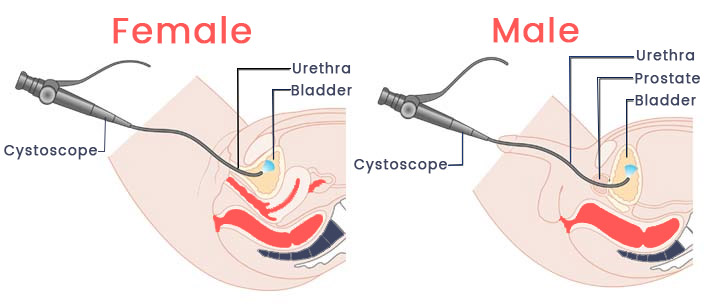Urethral Stricture Urethra- OIU, Urethroplasty
Stricture Urethra is a disease in which there is obstruction in the urethra due to narrowing. it can develop due to urethral infection/inflammation, post urethral procedures, trauma and various other reasons. It causes difficulty in passing urine, poor stream and at times lead to total retention of urine. surgery is the only solution for treating urethral strictures. Short segment strictures can be treated endoscopically. For longer and recurring urethral strictures that may not respond to endoscopic treatment and open surgery is usually required to widen or remove the narrowed section of the urethra. Urologist perform two types of surgery for urethral strictures: urethrotomy and urethroplasty.

Some of the Common Causes for Stricture are
- Stone passage
- Sexual Disease
- Gonorrhoea
- Syphillis/Tuberculosis
- Trauma/Bicycling
- Urethritis/Pus in urethra
- Past surgery
- Balanitis Xerotica Obliternas – in indian men without circumcision
But most people will never have any definite history. They will just present with their disease.
The stricture itself can present in may ways, but the common symptoms are
- Difficulty in passing urine
- Thin stream
- Straining to pass urine/ urine coming in drops
- burning in urine
- not able to ejaculate
- semen coming in drops
MCU/RGU
RGU or retrograde urethrogram is an investigation to diagnose urethral stricture. I usually perform this test on a daycare basis. Your urologist will make you lie down and then put some medicine in (dye/contrast/radiological contrast) in your urethra through the hole at the tip of your penis. And then will take an x ray. From the xray, he can then diagnose where the blockage is and how to treat it. A RGU is best performed by the treating urologist. I perform all my RGU personally to give my patients the best result.
Then he will fill your bladder with the contrast/dye and then you will be asked to pass urine in front of an xray. With this I can make out any hidden obstruction if any?
The xray exposure is usually minimal and you can usually go home after the procedure without any complication.
Depending on each unique case, one or bith investigations may be required. Additional investigations such as an Ultrasound or a MRI may be requested in complicated cases urethra-urethral stricture-rgu-oiu-urethroplasty-urethritis
OIU/IOU/VOIU/VIU
Optical internal urethrotomy/Internal Optical urethrotomy/VideoOIU or Video Internal urethrotomy.
They all mean the same procedure. Using a camera and a very small knife, your urologist will cut through the narrow segment, and allow you to void in a good stream.
It is a simple procedure, with ugly results if not done properly. Because of its simplicity, many unqualified surgeons are offering it to unsuitable cases. Please show prudence and consult a qualified urologist for the best results.
Depending on your need additional procedures like cold knife OIU or use of injections may be combined to give better results. The procedure may be performed in 1 to 3 sittings.
You will remain on a urine pipe for 2 days after the surgery.
Urethrotomy
In a urethrotomy, a surgeon uses a special endoscope, which is a thin instrument with a light embedded in the tip, to make an incision in the part of the urethra that is blocking the flow of urine. The incision helps widen the stricture. After this procedure, a catheter is left in place for a few days to divert urine away from the urethra during the healing process.
This procedure takes place in the hospital and a short stay in hospital. Because you may have pain and discomfort after the procedure for up to two weeks, your doctor may prescribe pain relief medication, as necessary. You should avoid sexual intercourse for one week after urethrotomy.
Urethroplasty
In urethroplasty, a surgeon locates and removes the narrowed section of the urethra and joins together the two healthy pieces. If the scarred segment of the urethra is too long to be removed, doctors may use tissue from other parts of the body to recreate the normal size of the urethra. This increases the size of the urethra, allowing urine to flow without difficulty. The long-term success rate of urethroplasty is high. About 80 percent to 90 percent of people who have had urethroplasty can expect permanent relief from urethral stricture.
